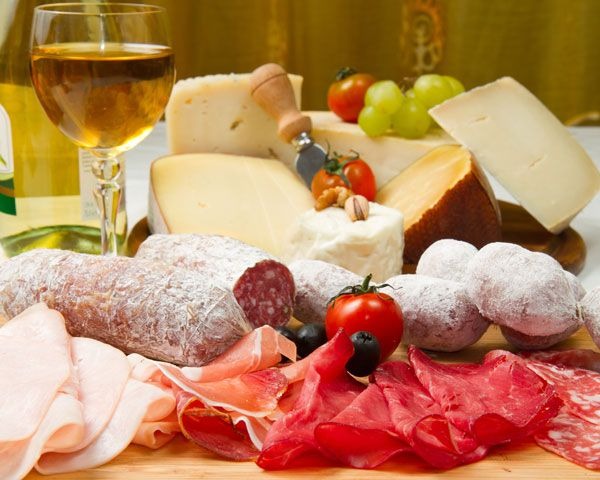How To Build A Holiday Charcuterie Plate
The great thing about food trends is that they often celebrate foods rich in culinary tradition — and charcuterie is no exception. Charcuterie, the art of preserving meats (whether through salting, curing, or cooking), is an ancient food preparation technique that was necessary due to lack of dependable refrigeration up until the early 1900s.
Thanks to Old World traditions crossing the seas, we're seeing a surge of U.S. artisan cured meats — from piquant, tangy salamis to rich, nutty pâtés, and from peppery, olive-flecked mortadella to tender, paper-thin bresaola.
Terroir, the wonderful "taste of place" often affiliated with wine and cheese, also appears in charcuterie. Unique grasses and vegetation eaten by the animals, certain minerals found in local water, and most importantly, distinct yeasts and molds floating through the air, all play a part in creating particularly delicious and complex flavors in aged meats. The dusty white coat on fermented salami contains millions of mold and yeast cells accumulated as the meat has aged, creating a dramatic effect on flavor. Local yeasts found on salami aged in Berkeley, Calif., for example, impart rustic, "barnyard" flavors, while regional yeasts found in Italy's Piedmont region yield sweeter, mushroom notes.
Once you've tasted different charcuterie and mastered the basics, it's time to up the ante and build a charcuterie plate. Here's how:
- Include one of each type of charcuterie, from mild to savory and spicy, by including cooked, boiled meat; salted, hung, air-dried meat; hung and fermented meat with casing.
- Pair salami with shaved or chunked Parmigiano-Reggiano or a softer cheese like Cowgirl Creamery's Organic Mt. Tam triple-crème Brie.
- With pâtés, the bread or cracker is key. You may want to include a few different options.
- Make sure to add olives, almonds, and a spicy fruit spread like a mostarda to charcuterie plates to continue to entice the palate.
Need some more guidance? Be sure to ask your grocer or a Certified Cheese Professional for their picks and to try a taste of different options.
— Cathy Strange, global cheese buyer for Whole Foods Market
